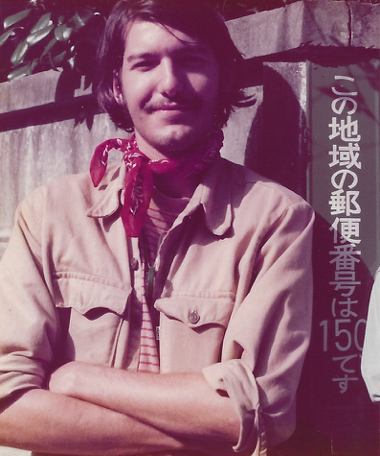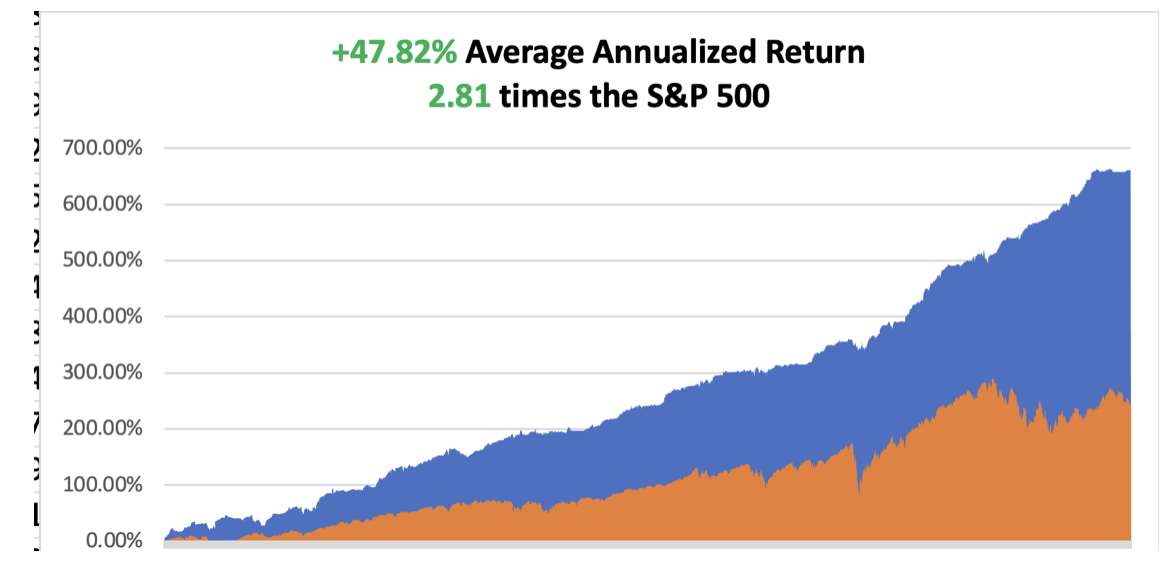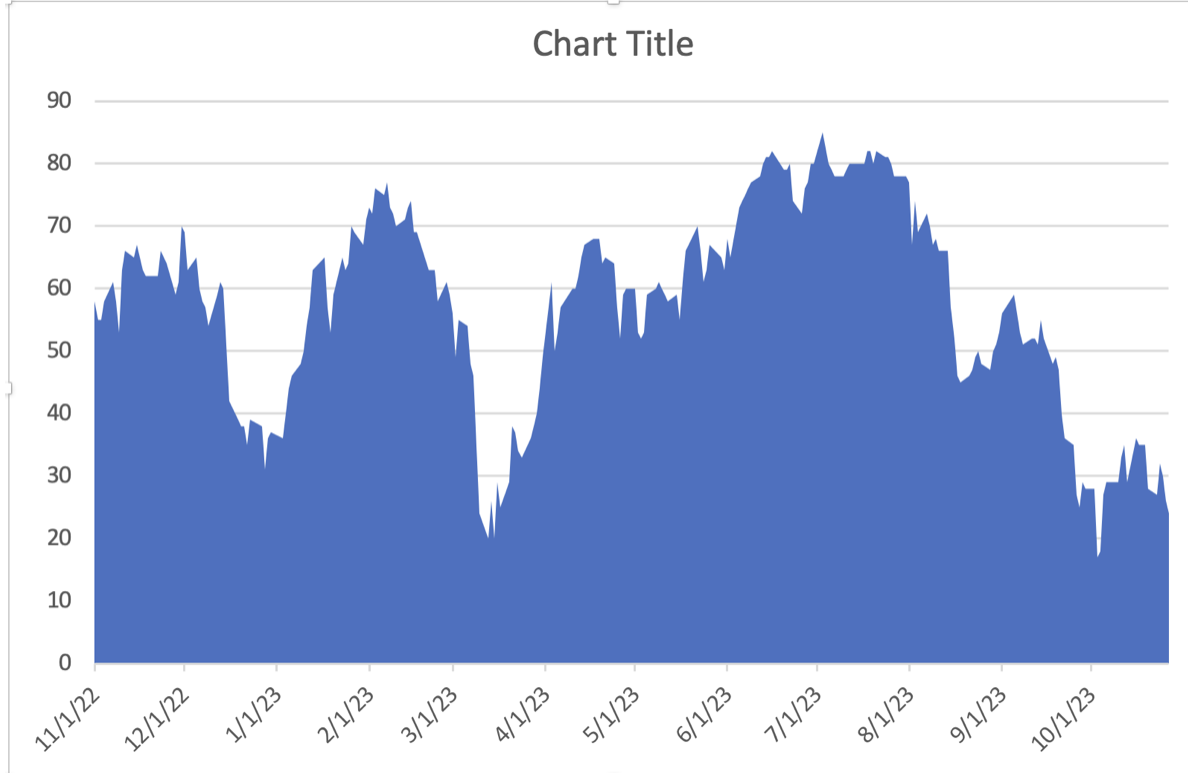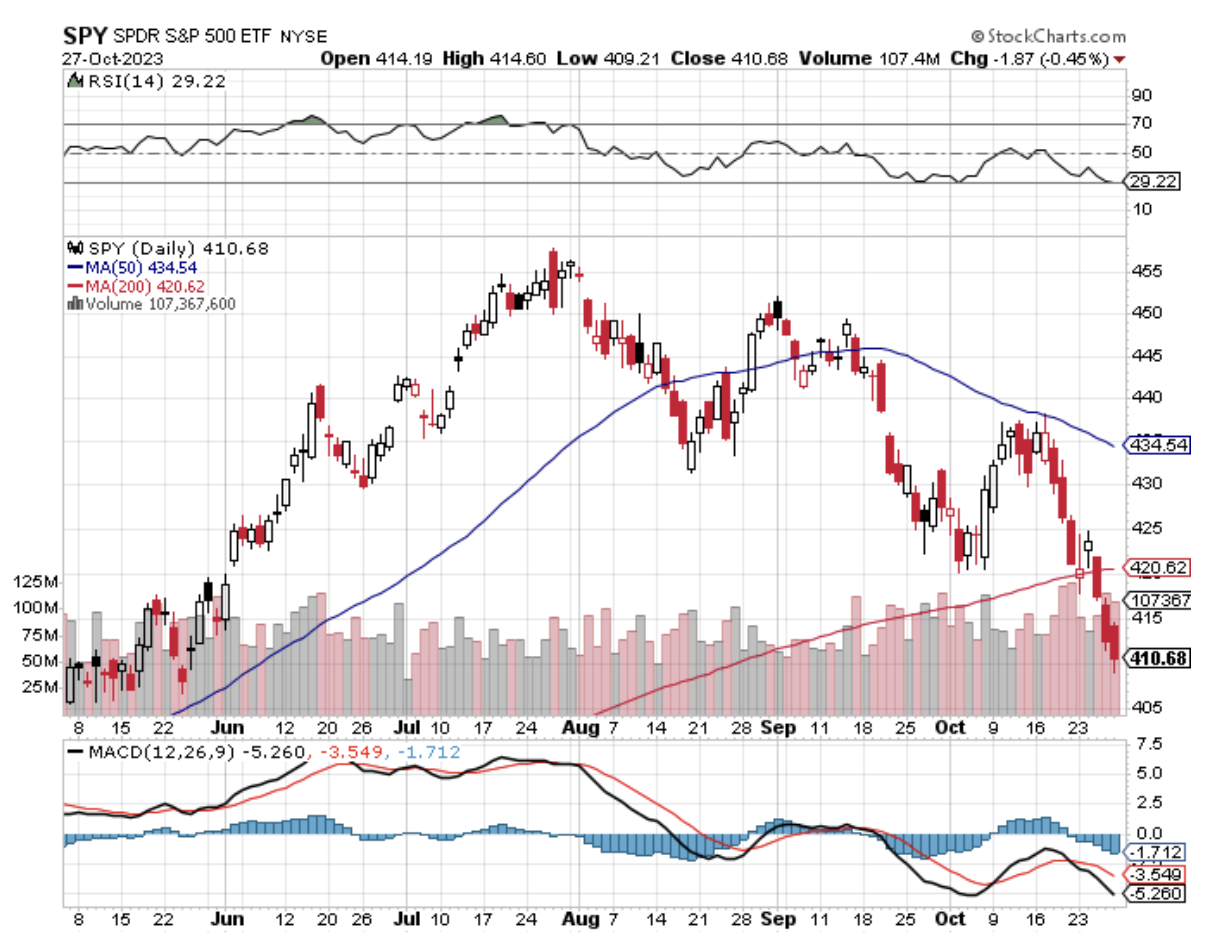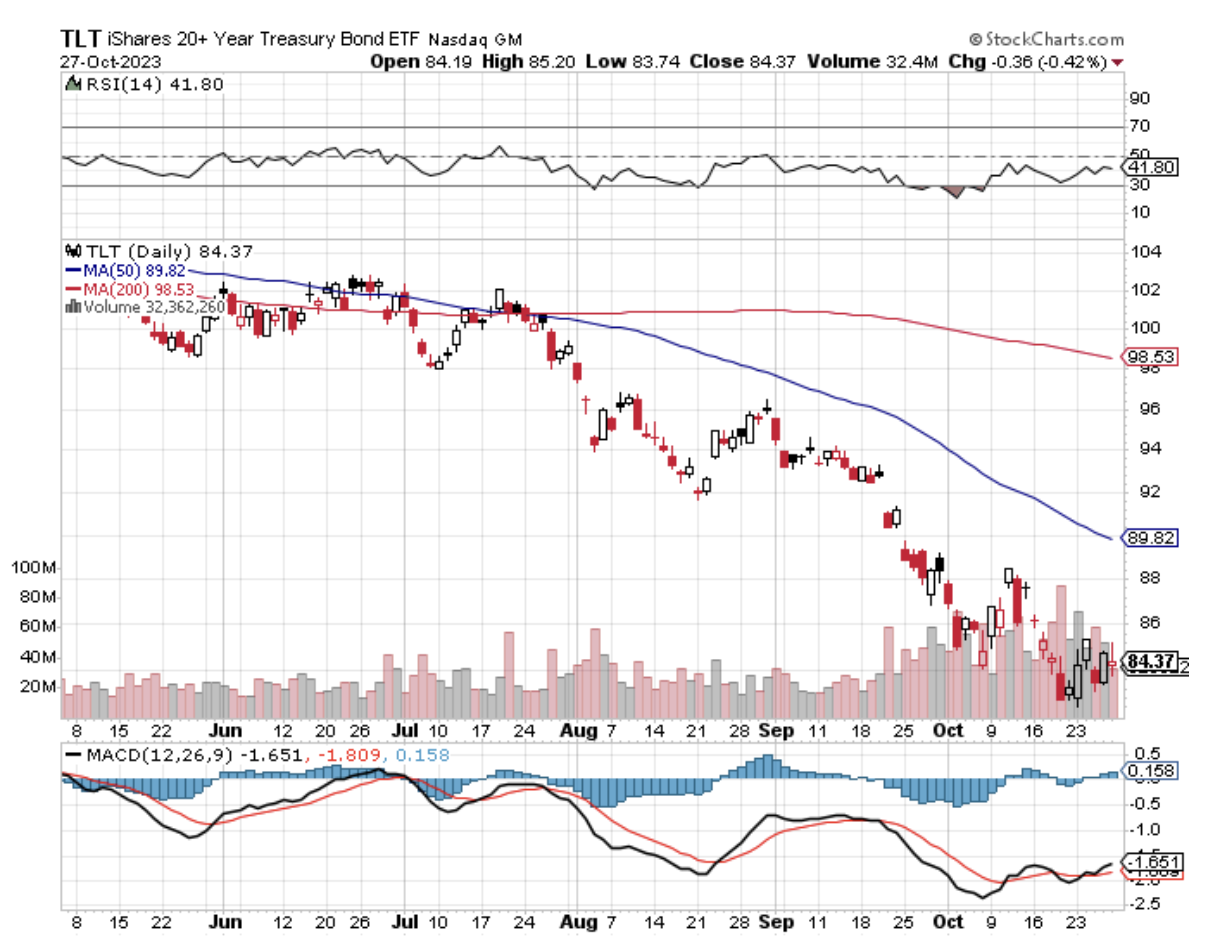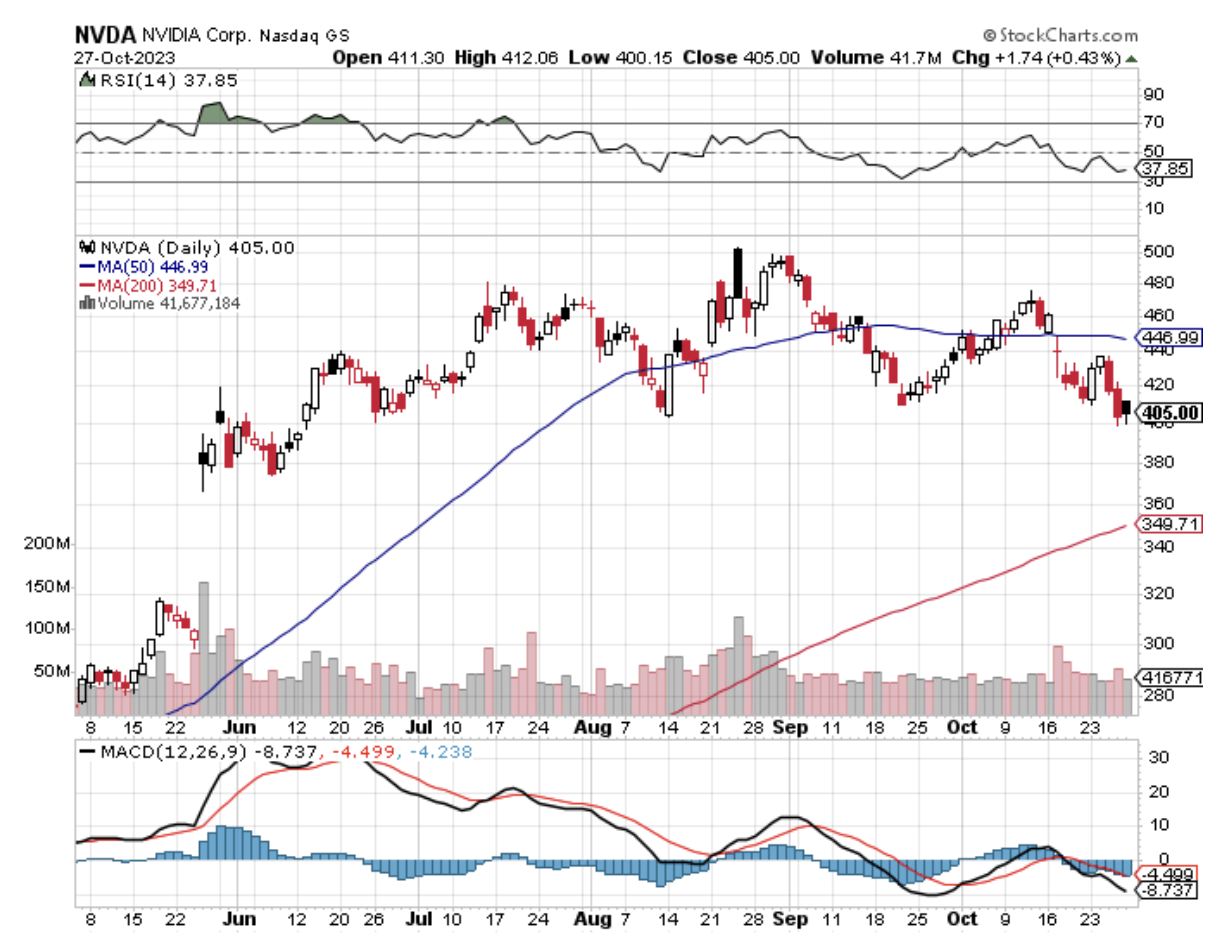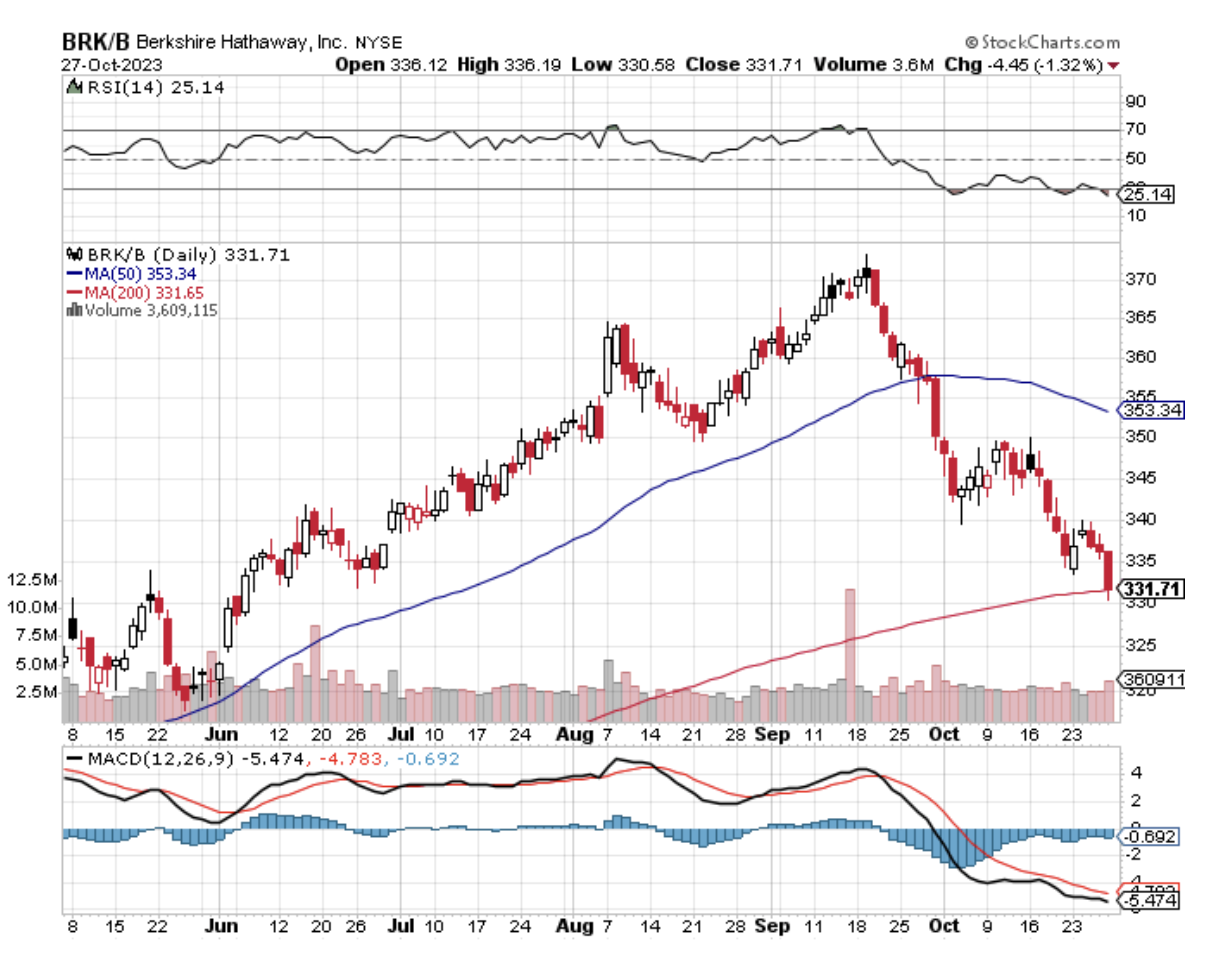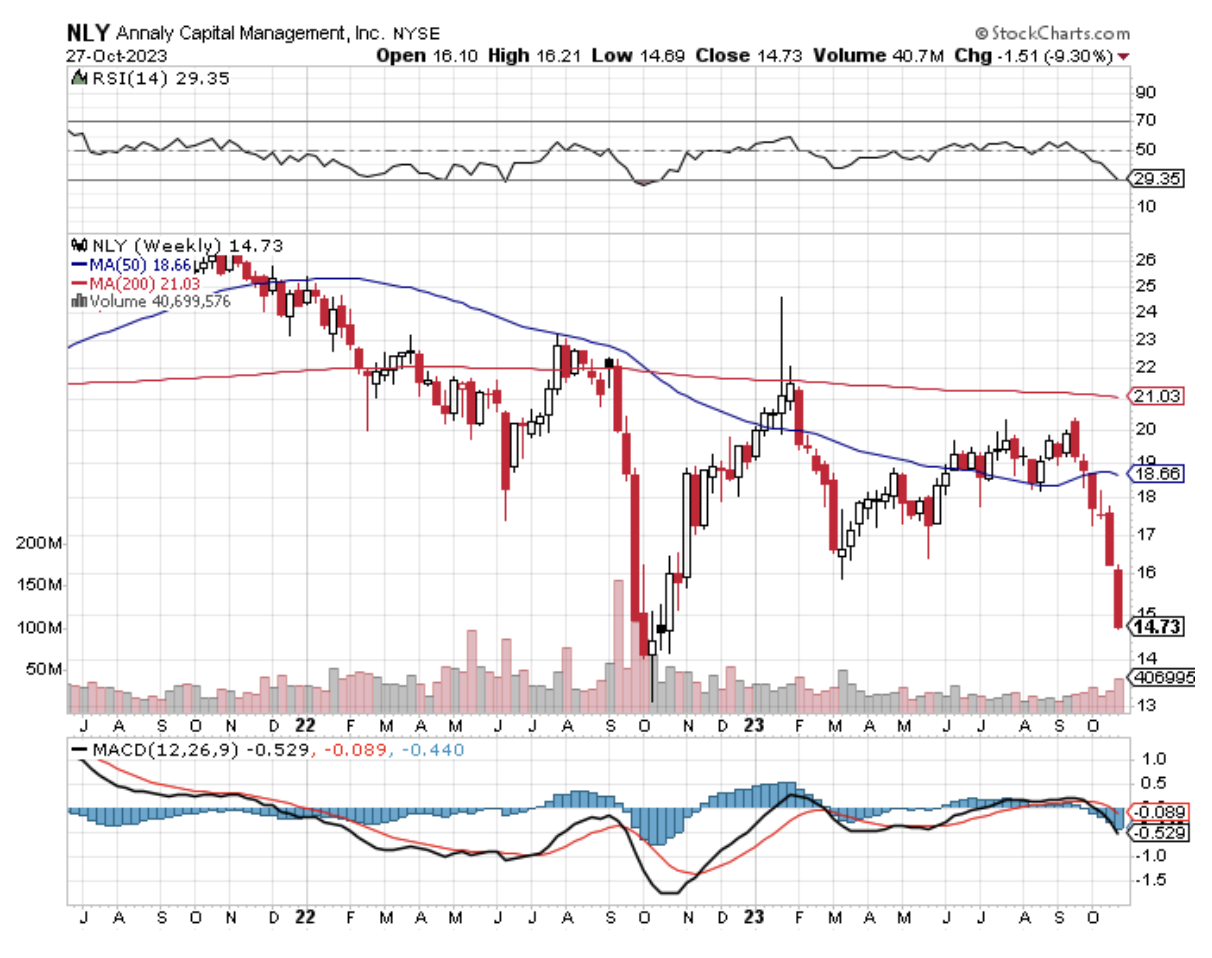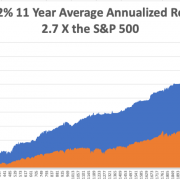I should have stayed in Ukraine.
At least that way I would know which direction the fire was coming from, the east. Back here in the US markets, the fire seemed to be coming from every direction all at once.
Good news was bad news and bad news even worse. An S&P 500 down 2.5% certainly left a bruise. The geopolitical outlook in the idle East is getting worse by the day.
But where others find nothing but despair, I see opportunity. Despite all the doom and gloom, all the elements of a yearend rally are setting up nicely. And it could be a sharp one as the time for it to play out is ever shrinking.
Hedge fund quantitative, momentum, and systemic shorts are at all-time highs, creating lots of buying power. AI has gone silent. Key earnings events will be done with the Apple announcement on Thursday, November 2. Ten-year bonds have repeatedly tried but failed to break the 5.00% yield.
Major tech stocks like (TSLA), (NVDA), (GOOGL), and (AMZN) have seen 20% corrections. The Mad Hedge AI Market Timing Index is unable to close below $20 and has been chopping a lot of wood under $30. If a new House speaker cuts a deal to avoid a government shutdown before November 17, it could be off to the races.
The smart thing to do here is to build up a list of stocks higher leverage to falling interest rates. All stocks benefit from falling rates but some much more than others.
One of my favorites is Annaly Capital Management (NLY), one of the largest mortgage real estate investment trusts (REITS). The company borrows money, primarily via short-term repurchase agreements, and reinvests the proceeds in asset-backed securities.
The company’s shares are unusually sensitive to rising overnight interest rates, and its shares are down 50% in a year. A monster rally in the stock is brewing. Oh, and it has a 17% dividend, which will likely get cut but still remain extremely high.
Finally, I want to bid a sad farewell to my old friend and fellow iconoclast Byron Wien. Byron was late of Blackstone and much earlier from Morgan Stanley.
Byron was famed for his “Ten Surprises” which he published each New Year and with which I used to assist him in the early years. This was a list of possible developments which, if they occurred, would have a disproportionate effect on the market.
Byron was 90 and will be missed. One of his favorite pieces of advice was to never retire and Byron was working right up until last week.
Hmmmm. Sounds like good advice to me.
So far in October, we are up +3.56%. My 2023 year-to-date performance is still at an eye-popping +64.36%. The S&P 500 (SPY) is up +7.89% so far in 2023. My trailing one-year return reached +74.44% versus +8.09% for the S&P 500.
That brings my 15-year total return to +661.55%. My average annualized return has fallen back to +47.89%, some 2.81 times the S&P 500 over the same period.
Some 44 of my 49 trades this year have been profitable.
Car Payment Delinquencies Hit Record Rate, with repossessions rising. With interest rate hikes making newer loans more expensive, millions of car owners are struggling to afford their payments. It’s a clear indication of distress at a time when the economy is sending mixed signals, particularly about the health of consumer spending. Usually, a recession indicator but not this time.
US Government Wraps up Fiscal 2023 with a $1.7 Trillion Deficit, up 23% from the previous year, which ended on October 31. It’s a major reason why bonds have been under such pressure since July. But the purchasing power of the total US national debt of $32 trillion fell by $260 billion last year, thanks to the torrid 8.1% inflation rate.
US Core PCE Jumps 0.3% in September, the most in four months. It’s the Fed’s favorite inflation indicator. Drugs, travel, and used cars saw the big price increases. Resilient household demand paired with a pickup in inflation underscores momentum heading into the fourth quarter
Ukraine War has Become a Big Generator at US Defense Companies. Companies such as Lockheed Martin (LMT), General Dynamics (GD), and others expect that existing orders for hundreds of thousands of artillery rounds, hundreds of Patriot missile interceptors, and a surge in orders for armored vehicles expected in the months ahead will underpin their results in coming quarters. Buy the sector on dips
Don’t Expect a Real Estate Crash Anytime Soon, with supplies at 40-year lows. Yes, 8% mortgages are a buzz kill, but 95% of homeowners with mortgages date back to the 3.0% era. No one wants to give up their free lunch. If you’re a mortgage originator, it’s another story.
Existing Home Sales Hit 13-Year Low at 1.13 million, down 8% YOY. The Median Home Price was up 2.8% to $394,300. This is 17% of the peak rate we saw in 2021 when overnight rates were still zero.
Pending Home Sales Rise 1.1% in September to 72.6, but are down 13% YOY. On a signed contract basis. But the absolute level is the lowest in two years. High mortgage rates are the buzz kill. Affordability is at a record low.
Adjustable Rate Mortgages Make a Big Comeback, with 5/1 ARMS costing only 6.99% compared to 8.0% for the conventional 30-year fixed, a 23-year high. Mortgage originations are now down 22% YOY.
US Economy Red Hot at 4.9% Growth Rate, the highest in two years. Unfortunately, the stock market sees a major slowdown in the current quarter. Consumer spending was the big driver.
Tech Selloff has Taken NVIDIA down to a 25 Times Earnings Multiple, the same as Walmart and Target, despite 50% earnings growth for the foreseeable future. This is just at the start of an AI super cycle. Get ready to start loading the boat.
My Ten-Year View
When we come out the other side of the recession, we will be perfectly poised to launch into my new American Golden Age, or the next Roaring Twenties. The economy decarbonizing and technology hyper accelerating, creating enormous investment opportunities. The Dow Average will rise by 800% to 240,000 or more in the coming decade. The new America will be far more efficient and profitable than the old.
Dow 240,000 here we come!
On Monday, October 30 at 8:30 AM EST, the Dallas Fed Manufacturing Index is out.
On Tuesday, October 31 at 2:30 PM, the S&P Case Shiller National Home Price Index is released.
On Wednesday, November 1 at 8:30 AM, the JOLTS Job Openings Report is published.
On Thursday, November 2 at 8:30 AM, the Weekly Jobless Claims are announced.
On Friday, November 3 at 2:30 PM, the October Nonfarm Payroll Report is published. At 2:00 PM the Baker Hughes Rig Count is printed.
As for me, one of the benefits of being married to a British Airways stewardess in the 1970s was unlimited free travel around the world. Ceylon, the Seychelles, and Kenya were no problem.
Usually, you rode in first class, which was half empty, as the British Empire was then rapidly fading. Or you could fly in the cockpit where, on long flights, the pilot usually put the plane on autopilot and went to sleep on the floor, asking me to watch the controls.
That’s how I got to fly a range of larger commercial aircraft, from a Vickers Viscount VC-10 to a Boeing 747. Nothing beats flying a jumbo jet over the North Pole on a clear day, where the unlimited view ahead is nothing less than stunning.
When gold peaked in 1979 at $900 an ounce, up from $34, The Economist magazine asked me to fly from Japan to South Africa and write about the barbarous relic. That I did with great enthusiasm, bringing along my new wife, Kyoko.
Sure enough, as soon as I arrived, I noticed long lines of South Africans cashing in their Krugerands, which they had been saving up for years in the event of a black takeover.
There was only one problem. My wife was Japanese.
While under the complicated apartheid system, the Chinese were relegated to second class status along with Indians, Japanese were treated as “honorary whites” as Japan did an immense amount of trade with the country.
The confusion came when nobody could tell the difference between Chinese and Japanese, not even me. As a result, we were treated as outcasts everywhere he went. There was only one hotel in the country that would take us, the Carlton in Johannesburg, where John and Yoko Lennon stayed earlier that year.
That meant we could only take day trips from Joberg. We traveled up to Pretoria, the national capital, to take in the sights there. For lunch, we went to the best restaurant in town. Not knowing what to do, they placed us in an empty corner and ignored us for 45 minutes. Finally, we were brought some menus.
The Economist asked me to check out the townships where blacks were confined behind high barbed wire fences in communities of 50,000. I was given a contact in the African National Conference, then a terrorist organization. Its leader, Nelson Mandela, had spent decades rotting away in an island prison.
My contact agreed to smuggle us in. While blacks were allowed to leave the townships for work, whites were not permitted in under any circumstances.
So, we were somewhat nonplussed Kyoko and I were asked to climb into the trunk of an old Mercedes. Really? We made it through the gates and into the center of the compound. On getting out of the trunk, we both burst into nervous laughter.
Some honeymoon!
After meeting the leadership, we were assigned no less than 11 bodyguards as whites in the townships were killed on sight. The favored method was to take a bicycle spoke and sever your spinal cord.
We drove the compound inspecting plywood shanties with corrugated iron roofs, brightly painted and packed shoulder to shoulder. The earth was dry and dusty. People were friendly, waving as we drove past. I interviewed several. Then we were smuggled out the same way we came in and hastily dropped on a corner in the city.
Apartheid ended in 1990 when the ANC took control of the country, electing Nelson Mandela as president. A massive white flight ensued which brought people like Elon Musk’s family to Canada and then to Silicon Valley.
Everyone feared the blacks would rise up and slaughter the white population.
It never happened.
Today, South Africa offers one of the more interesting investment opportunities on the continent. The end of apartheid took a great weight off the shoulders of the country’s economy. Check out the (EZA), which nearly tripled off of the 2020 bottom.
Kyoko passed away in 2002 at age 50.
Stay Healthy,
John Thomas
CEO & Publisher
The Diary of a Mad Hedge Fund Trader

